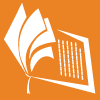Submission Preparation Checklist
As part of the submission process, authors are required to check off their submission's compliance with all of the following items, and submissions may be returned to authors that do not adhere to these guidelines.- The submission has not been previously published, nor is it before another journal for consideration (or an explanation has been provided in Comments to the Editor).
- The submission file is in OpenOffice, Microsoft Word, or RTF document file format.
- All tables, illustrations, diagrams and photographs are prepared as separate files, both in black-and-white for printing and in color for the on-line version.
- Where available, URLs for the references have been provided.
Author Guidelines
AUTHOR GUIDELINES
All Infotheca articles are published both in English and Serbian in the same issue. Authors should submit their articles in one of the languages; only after the notification of acceptance the translated article is expected (for Serbian authors; for all other authors translation from English to Serbian is provided by the journal). Except the printed edition, all articles are also published in the online edition in open access.
PAPER CATEGORIZATION
For documents accepted for publishing which are subject to review, the following categorization in the Journal applies:
- Scientific papers:
- Original scientific paper (containing previously unpublished results of authors’ own research acquired using a scientific method);
- Review paper (containing original, detailed and critical review of a research problem or a field in which authors’ contribution can be demonstrated by self citation);
- Preliminary communication (original scientific work in progress, shorter than a regular scientific paper);
- Disquisition and reviews on a certain topic based on scientific argumentation.
- Scientific articles presenting experiences useful for advancement of professional practice.
- Informative articles can be:
- Introductory notes and commentaries;
- Book reviews, reviews of computer programs, data bases, standards etc.
- Scientific event, jubilees.
Papers classified as scientific must receive at least two positive reviews. The opinions of the Editorial Committee do not have to correspond to those expressed in the published papers. Papers cannot be reprinted nor published under a similar title or in a changed form.
ELEMENTS OF MANUSCRIPTS
For scientific or professional papers the following data should be provided:
- Papers should not normally exceed 15 A4 pages, Times New Roman 12pt. For longer articles the authors should contact the journal editors.
- Names and surnames of all authors should be written in the sequence in which they will appear in a published paper.
- After each author’s full name, without titles and degrees, an e-mail address should be specified, ORCID, as well as the full and official name of his or her affiliation. (For large organizations full hierarchy of names should be specified, top down).
- The submission date should be provided.
- The authors should suggest the category of their paper but the Editor-in-Chief is responsible for the final categorization.
- An informative abstract not normally exceeding 250 words that concisely outlines the substance of the paper, presents the goal of the work and applied methods and states its principal conclusion, should accompany the paper. The abstract should be supplied in both languages used for publication. In the abstract, authors should use the terms that, being standard, are often used for indexing and information retrieval.
- Authors should supply at least 3 but not more than 10 keywords separated by commas that designate main concepts presented in the paper. The list of keywords should be supplied in both languages used for publication.
- If paper derives from a Master’s thesis or Doctoral dissertation authors should give the title of the thesis or dissertation, as well as a date of its submission and names of responsible institutions.
- If the paper presents the results of authors’ participation in some project or program, authors should acknowledge the institution that financed the project in a special section “Acknowledgment” at the end of the article, before the “Reference” section. The same section should contain acknowledgment to individuals who helped in the production of the paper.
- If the paper was presented at a Conference but not published in its Proceedings, this should also be stated in a separate note.
- Authors can use footnotes, while endnotes are prohibited; however, too long footnotes should be avoided. Authors can add appendices to their paper.
- The referenced material should be listed in the section “References” at the end of the paper. In the reference list authors should include all information necessary for locating the referenced work.All items referenced in the text should be listed here; nothing that was not referenced in the text should appear in this section.
EDITING CONVENTIONS FOR ACCEPTED PAPERS
- Papers should be prepared in Microsoft Word doc format or another open source text editor (for example .docx, .rtf or .txt).
- and submitted using LaTeX. Authors that are not familiar with LaTeX can prepare their papers using Word, as .doc, .docx, .rtf or .txt documents. These authors should not use any special formatting - the final formatting and transformation to LaTeX will be done by the Infotheca team.
- The papers written in Serbian should use CYRILLIC alphabet because they will be printed in that script. The only exceptions are those parts of the text for which the use of the other script, such as Latin, is more appropriate. All scripts should be represented using Unicode encoding, UTF-8 representation.
- Title of the paper should not be written in capital letters. The authors should keep the length of titles reasonable – preferably less than 150 characters. For titles longer than 90 characters authors should provide a shorter title that will be used for page headers.
- Italic type may be used to emphasize words in running text, while bold type or italic bold type can be used if necessary. Underlined text should be avoided. Please do not highlight whole sentences or paragraphs.
- Paper can be devided in sections and subsections, but more than two levels of the section headings should be avoided. All sections and subsections will appropriately numbered. Appendices, if any, should come at the end of the paper and they will also be appropriately labeled. If using lists, do not use more than two levels of nesting.
- All paragraphs should be separated by one empty line (one Enter).
- Authors should avoid too wide tables keeping in mind that the journal is published on A5 paper and. All tables, illustrations, diagrams and photographs should not be wider than 72.5 mm (the with of one column) or (exceptionally) 150 mm (the with of the page). All illustrations should be prepared in some lossless format, for instance .png, .tif or .jpg and their resolution should be at least 3The authors are kindly requested to add (if possible) the link to the screen from which a screenshot was taken. When taking a screen shot of a part
- The authors are kindly requested to add (if possible) the link to the screen from which a screenshot was taken. When taking a screen shot of a part of some screen, authors are advised to use the Zoom possibility of the browser or other program. For diagrams that are produced with Excel, please provide the original .xls document.
- All tables, illustrations, diagrams and photographs should be prepared as separate files, both in black-and-white for printing and in color for the on-line version. Captions that should be below tables, illustrations, diagrams or photographs should remain in the text. Each file should have the same name as the file containing the main text, followed by the type of material to which the ordinal number in the text is added. For instance, the file containing the fourth figure of the paper “Example” should be named Example_figure_4.
- Please add additional document(s) that explain some specific aspects of formatting required for your paper.
- URL addresses that appear in the paper should be placed in footnotes; the date when the site was visited should be given.
REFERENCES AND CITATION
- Referenced material should be listed at the end of the text, within the unnumbered section References. The reference section should be complete; references should not be omitted. This section should not contain any bibliographic information not referenced in the main text. Referenced items should not be mentioned in footnotes.
- Entries in the reference list should be ordered alphabetically by authors or editors names, or publishing organizations (when no authors are identified). If this list contains several entries by the same authors, these entries should be ordered chronologically.
- For preparation of a reference list use Chicago Manual of Style reference list entry (https://www.chicagomanualofstyle.org/tools_citationguide/citation-guide-1.html).
- Full names of journals, and not their short titles or acronyms, should be specified. Use the 10-point type for entries in the reference list.





